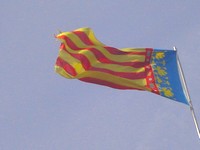A Brief History of Valencia Spain
This makes for exciting and essential reading if you want to really understand and appreciate this beautiful Spanish city.

Valencia itself was founded by the Romans in 138 BC and given the name ‘Valentia’.
It has been inhabited by the Greeks, Phoenicians, Carthaginians, Romans, Visigoths, Byzantines and in the 8th century the Moors occupied Valencia for 500 years.
The Moors brought with them oranges, olives, silk, rice and ceramics which are still an integral part of Valencia. Most importantly they introduced the highly beneficial irrigation system which is still in use today.
In 1094 Rodrigo Díaz de Vivar, better known as El Cid (The Boss), conquered Valencia. This was shortlived as King Jaime I of Aragón took the city in 1238 and made Valencia a kingdom.
The Golden Age of Valencia
The 15th Century was Valencia’s Golden Age and the history of Valencia Spain illustrates just how prosperous and advanced Valencia really was.
This was the era in which many of Valencia’s famous buildings such as La Lonja (the silk exchange), El Miguelete (bell tower), Palau de la Generalitat (the Valencian Community Government Palace) and Torres de Quart (Quart Towers) were constructed.
Valencia was one of the most cultured and important trading powers in the Mediterranean.
At this time arts and culture flourished and the history of Valencia illustrates how many famous Valencianos such as the novelist Joanot Martorell contributed to the culture of Valencia by writing the first European novel, ‘Tirant lo Blanch’ (The White Knight).
After the War of Succession (1701-1714) Valencia
With the victory of the Bourbon Philip V, Valencia was stripped of the special privileges and autonomy (Fueros) which the city had enjoyed since the reign of King Jaime.
The French Bourbons ruled Spain until the War of Independence (1808-1813) when Napoleon sent troops into Spain and established his brother, Joseph Bonaparte as king.
This triggered violent uprisings in Valencia as well as other Spanish cities and the French finally withdrew in 1813.
Valencia in the 19th Century
The early 19th century gave birth to what is referred to as the Renaixenca (Renaissance). This was the time when the Valenciano language (a form of Catalan) was rediscovered as part of the national heritage.
In the late 19th century Valencia’s city walls were demolished in order for the city to expand.
Nonetheless, you still get the feeling that the wall is still there as major landmarks such as Torres de Quart and Torres de Serranos still remain.
The river Turia had often flooded the nearby Old Quarter of Valencia and in 1957 the floods killed many Valencians so the river was re-routed. During the 1990s the original dry riverbed was converted into the beautiful Turia Gardens we now enjoy today.
Valencia Today
Today Valencia is a major center of arts and culture and the futuristic City of Arts and Sciences (designed by Valenciano architect Santiago Calatrava and situated at the end of the Turia Gardens, is definitely the icing on the cake.
You may also like:
National Day of the Region and Valencia’s Valentine’s Day
Valencia Map